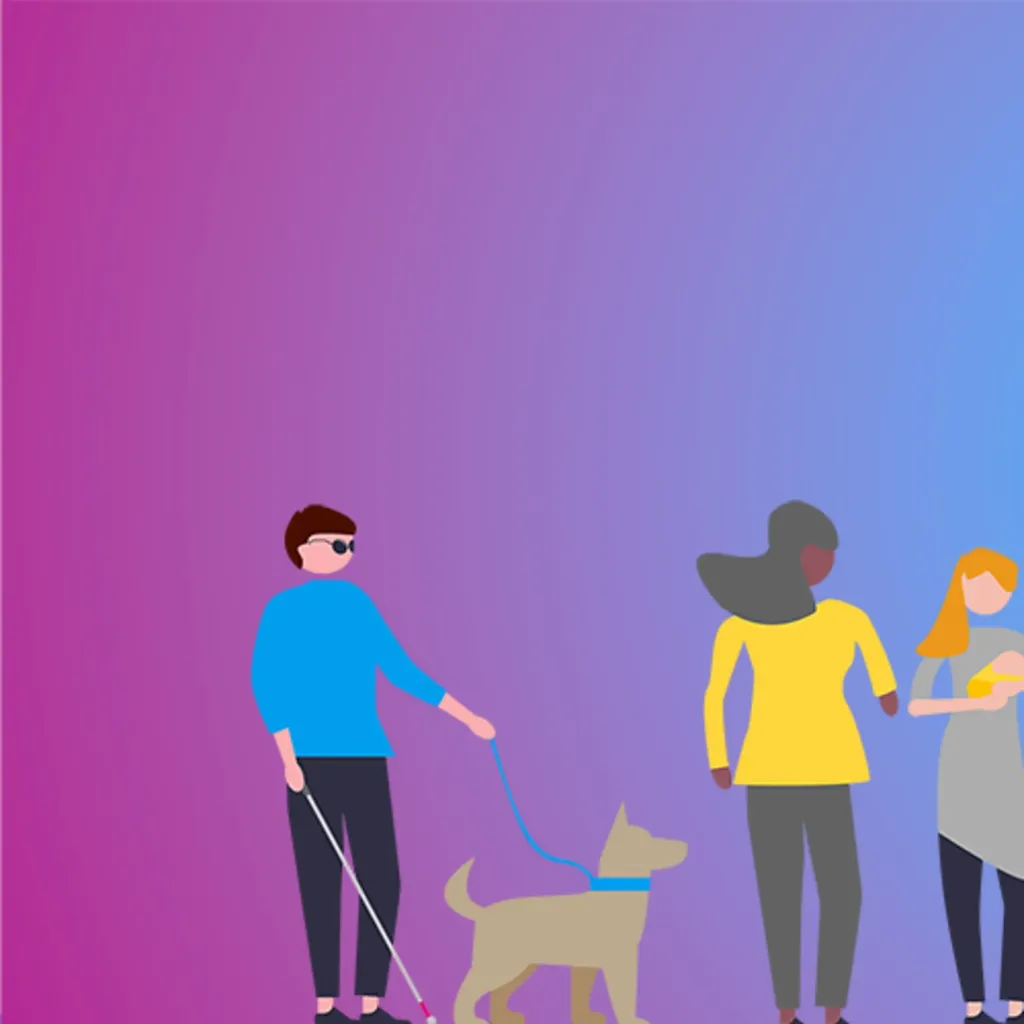In this insights article, Adrian Wegener, Project Manager at Ergosign and founder of Eye Build It, shares his knowledge and offers tips on how to approach the topic of digital accessibility, especially as a company. Adrian has been working deeply on the topics of accessibility and inclusive design for years and has received awards from the German Design Council, the EU and the UN, among others.
There have been innovative people who have worked to make technologies accessible ever since the time of the typewriter (source). And our society is increasingly focusing on accessibility through legislation, such as the European Accessibility Act (source). The effort required by companies overall to ensure true digital accessibility varies greatly. But there’s good reason why this effort is worthwhile:
„Accessibility measures aim to include the world’s largest minority, 15% of the world’s population (source), who have disabilities, in everyday technological life."
For many companies, ensuring digital accessibility represents an unclear hurdle because of lack of experience or personal connections. What do you need to do if you want to engage with this topic – or the laws surrounding it?
In order to find and remove barriers to accessibility, we first need personal experience with accessibility and inclusion. Learning by doing. Sounds like a long process. When we’re learning something, we often think: “If I’d known that earlier, I would be in a much better position.”
Today we can make this wish come true – without a time machine. Below are answers to some questions I asked myself when I first started learning about accessibility. These answers, which come from several years of deep experience in the field of inclusive design, are intended to accelerate the learning process for readers.
How many people does it take to screw in an accessible light bulb?
Screens consist of a lot of lights and are often the access point for our daily digital lives. How do we ensure that as many people as possible have this access?
We can, for example, increase the contrast so people with poor eyesight can also see the information. We’re concerned that some people can’t see these lights, so we offer alternatives. Or we might find that people with intellectual disabilities can perceive the light but, depending on the structure, they might not understand the information behind it. The individual measures for addressing these issues might seem simple. But they only work if they’re seen in context and with the involvement of all users.
So, regarding the light-bulb question: We need a lot of people – in order to determine whether the light is actually broken and whether some people would prefer to have a better speaker or instructions.
I’m heading out on the road to greater digital accessibility. What should I pack in my suitcase?
As you can see from the first question, accessibility has a lot to do with mindset. Accessibility isn’t something you can just work through like a checklist.
But with that in mind, here’s a checklist of things that can help on the road to greater digital accessibility:
Mindset of collaborative design, partnership and openness.
Conversations with friends, family, acquaintances, at work or in public. Many disabilities are invisible. They might only become clear through conversations in an open and positive environment.
Try using simulations – not the kind in the Matrix, but simulations of disabilities. They can help you better understand people’s different abilities (e.g. visual impairment filters, screen reading software, contrast calculator, dyslexia simulation).
Plan specific steps toward accessibility: Implementing measures after developing applications and services is usually more complicated than doing things right from the outset.
You also need the understanding that checklists aren’t enough because they are never complete. Requirements and technology, norms, and the technical state of art change regularly and we have to adapt.




